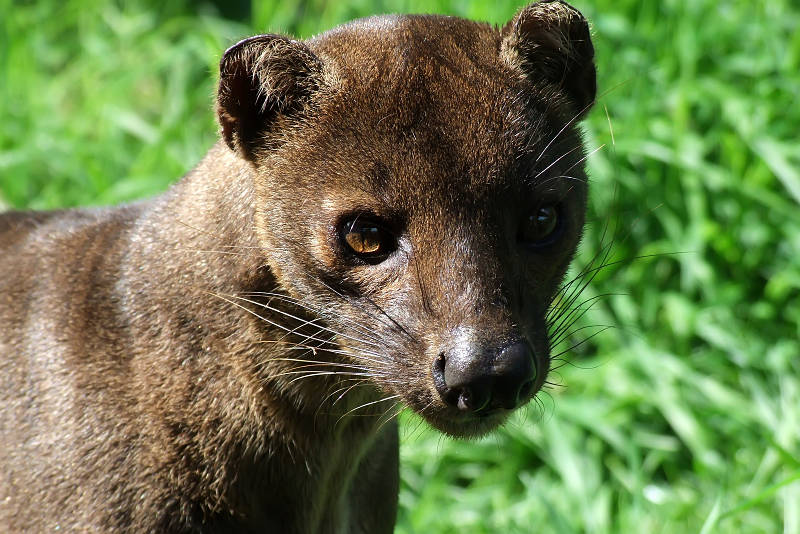Fossa Facts
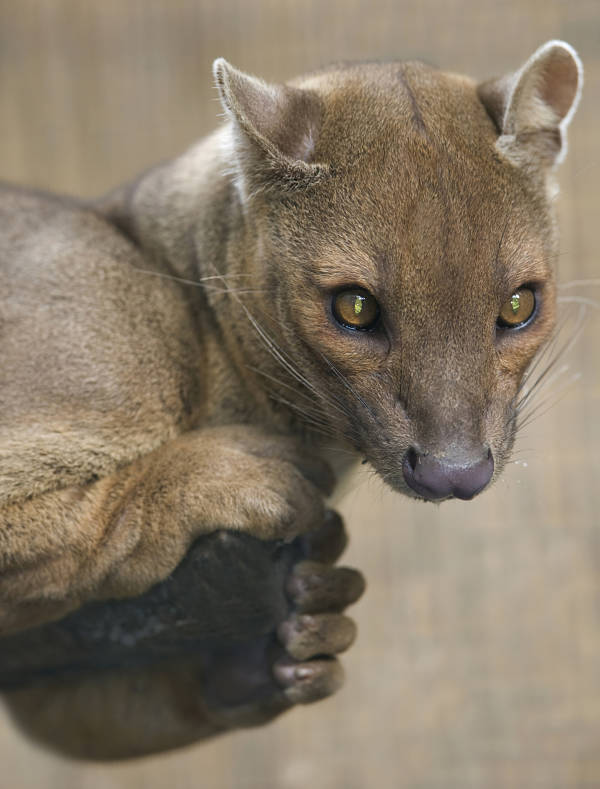 Portrait of a Fossa
Portrait of a FossaOne of the coolest fossa facts is that they only exist on the island of Madagascar.
Madagascar is a large island nation located off the southeast coast of Africa, where some very unique creatures live.
The fossa, a close relative of the mongoose, is Madagascar's largest predator, and the only animal to regularly and successfully hunt the islands largest lemur species.
The fossa looks very much like a small, brown cougar, but it is not a cat.
Fossas are small animals at about 15 inches at the shoulder.
They are rarely more than 30 inches long, not including the equally long tail, and they average somewhere between 15 and 30 pounds, with males a bit larger than females.
Fossas live in well-vegetated forest throughout the island, and range over large territories, sometimes traveling many miles in a single day.
They scent-mark their territories by spraying musty secretions from their anal glands.
The fossa has cat-like abilities of speed, power, and incredible stealth.
They are as comfortable in the trees as they are on the ground.
They use their retractable claws to dig in and climb straight up tree trunks.
When it's time to come down, they have double-jointed ankles like a squirrel, allowing them to descend head first with complete control.
On the ground they walk just like a cat, but tend to hold their tail straight out behind them.
They can also leap from branch to branch, this time almost like a monkey, using their tail as a rudder in the air.
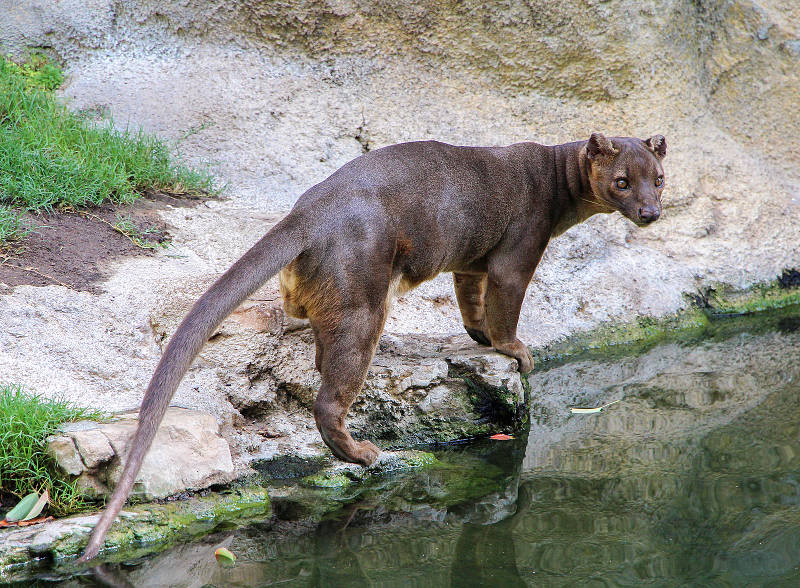
The fossa's tail is thick, somewhat rigid, and as long as it's body.
The limbs are stout, with wide, fleshy paws and strong, arched toes.
Fossas appear to be a fusion of mountain lion and mongoose, slinky and low to the ground like a mongoose, powerfully muscled and agile like a cougar.
The head is a fantastic, expressive wedge-shape, with a big, wet dog-like nose, round, wide-set ears like a bear, a feline face, and unusual, somewhat spooky eyes.
Although not nocturnal, the fossa will hunt day or night, and can see very well in the dark.
In the light of day, the pupils become tiny, vertical slits, nearly disappearing.
It is a creature that has been feared in its native land for centuries because of its secretive existence and haunting appearance.
The fossa was believed to be a demon on earth, that would steal infants from their cradles or lull victims into a trance then slowly disembowel them.
The fossa will emit a musky scent when agitated, and it was once thought that the scent alone could kill birds and small animals.
Fossas live in forested areas where they scent mark large territories.
They don't live in dens but rather sleep on limbs, sometimes sunning themselves.
They are solitary animals that are virtually silent.
Fossas are cathemeral, meaning they may be active day or night, alternating swift activity with deep naps.
They are mysterious and secretive and only limited knowledge exits of their lifestyle and habits in the wild.
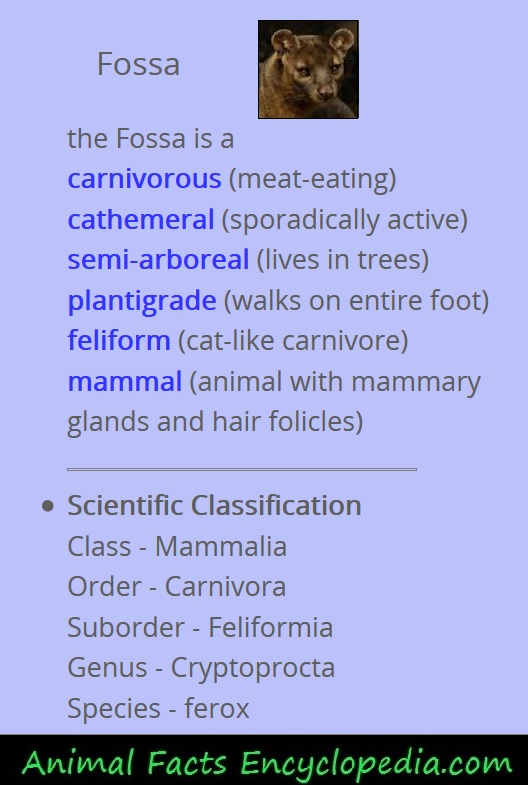
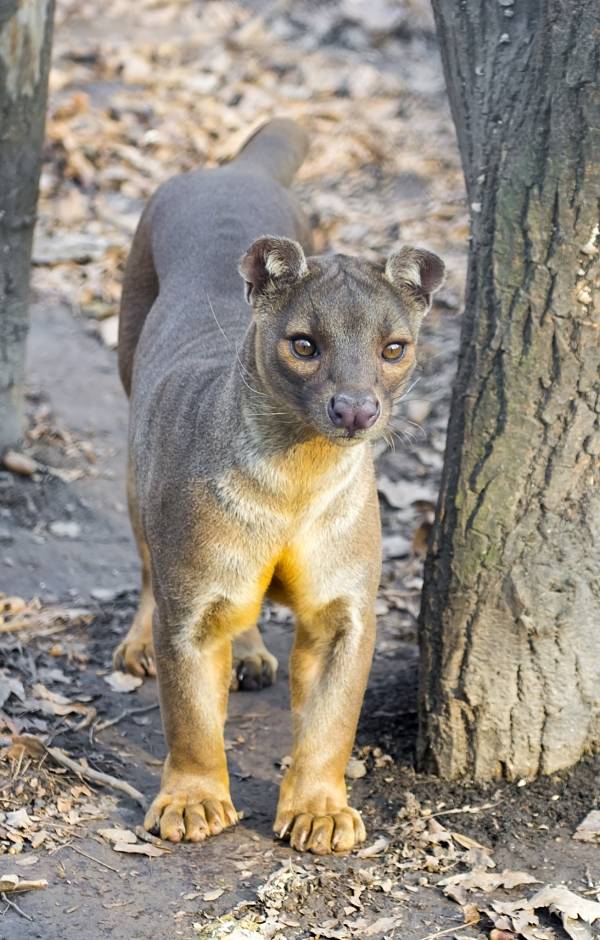

is the fossa endangered?
Although, as Madagascar's largest predator, the fossa has no natural enemies, humans may soon cause their extinction.
The fossa has recently been moved from a vulnerable state to an endangered species.
A government coup in 2009 has led to instability in the nation of Madagascar, and little is being done to protect the species.
They are regularly pursued, trapped and hunted by the native population, who eat their meat and make amulets and jewelry from their teeth and claws.
Their habitat is quickly being depleted, and as farms move in, the fossa, viewed as a pest, may soon be hunted out of existence.
Fossas have a slow reproductive rate which has contributed to their plight.
Young fossas mature very slowly and remain with their mother for over a year, so females can only breed every other year.
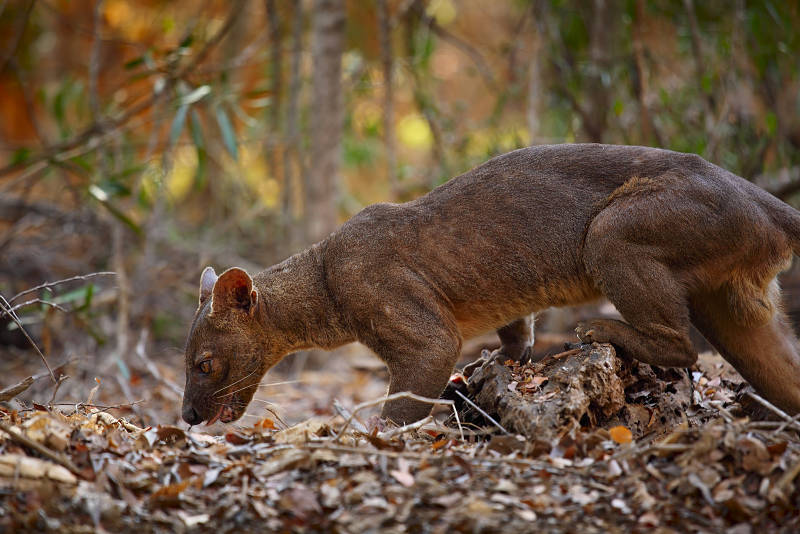
a few more fossa facts
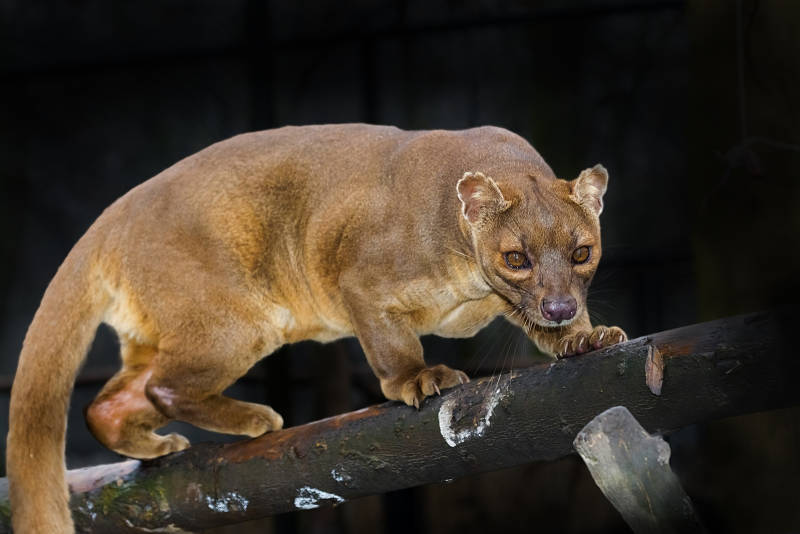
- The fossa is related to the mongoose
- The fossas favorite prey are lemurs
- Fossas are about 20 to 30 inches long without the tail
- The tail is usually as long as the body
- Fossas weigh 15 to 30 pounds with males larger
- Fossas are a solid bronze/brown color with brown eyes
see more animal extreme closeups
Recent Articles
-
African Animals - Animal Facts Encyclopedia
Oct 11, 16 10:27 PM
African Animals facts photos and videos..Africa is a wonderland for animal lovers, and a schoolroom for anyone who wants to learn about nature, beauty and the rhythm of life -
Baboon Facts - Animal Facts Encyclopedia
Oct 11, 16 10:26 PM
Baboon facts, photos, videos and information - Baboons are very distinctive looking monkeys with long, dog-like snouts and close set eyes. -
Great Apes Facts - Animal Facts Encyclopedia
Oct 11, 16 10:25 PM
Great apes facts, photos and videos..Human beings did not evolve from chimpanzees, modern chimps and gorillas do not appear in the fossil records until much more recently than homo sapiens..




















